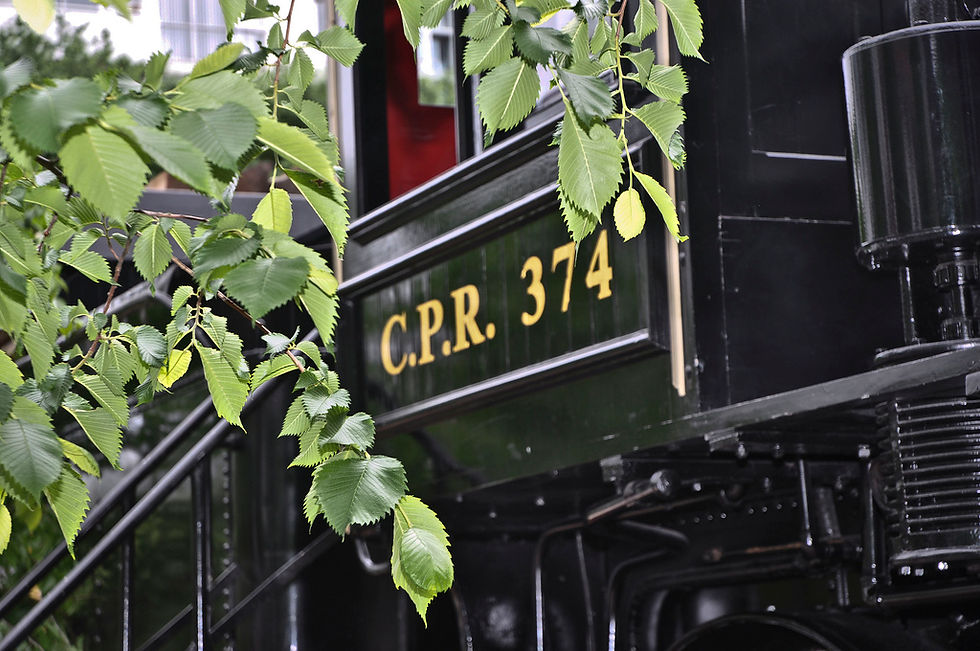Railway Series Part 4: The Railway and the SkyTrain
- Glauce Fleury
- Nov 13, 2013
- 2 min read
Updated: Jun 16, 2023

If you take the Expo or Millennium SkyTrain lines, most of your travel is above the city, which gives you the chance to admire the beautiful landscapes of Vancouver. However, when the SkyTrain arrives downtown, passing by the Stadium–Chinatown Station, you can’t see anything else, right? You’re in a tunnel. But what does it have to do with the history of Yaletown?
With the development of the railway and the main Canadian Pacific Railway (CPR) line completed from Craigellachie to Vancouver in the 1880s, the equipment and repair shops existing in Yale, a small village in the Fraser Canyon, were transferred to Vancouver to be resituated—and expanded—in Yaletown. The trains coming from the east arrived near Gastown, where Waterfront Station—used in the past as the third CPR station—is currently located.
“To get from the CPR main line along the south shore of Burrard Inlet, a branch line was constructed across Cordova, Pender and Hastings streets out to the Roundhouse,” says William Johnston, director of the West Coast Railway Association (WCRA) and the volunteer in charge of the Engine 374 Pavilion. “If you stand on Pender Street, near where the Chinese Millennium Gate is, you’ll see tracks right across the street.” This route was the right-of-way used by the line to get to the Roundhouse, where the engines were repaired and serviced.
After a few years, this proved not to be a good idea. On June 7, 1929 news about the railway was spread all over the city. “The trains tied up the traffic so badly that the City of Vancouver told the CPR to find another way to get the trains to the railway yards,” says Johnston. After the Railway Board recommended the removal of the level crossings, the CPR claimed that they weren’t a serious issue. The argument wasn’t accepted by anyone, in particular drivers and pedestrians. The trains were blocking the streets downtown.
Here’s the solution: the CPR built a tunnel under Dunsmuir Street, by which the trains would move from Waterfront to the Roundhouse area. That’s why I mentioned the Expo and Millennium SkyTrain lines at the beginning of this post. When you’re moving from Stadium–Chinatown to Waterfront, you’re inside the old Dunsmuir tunnel.
Isn’t it amazing that every time we take one of those lines we’re travelling through a time tunnel? Remember, this part of the history of Yaletown is related to the agreement between the British colonies and the rest of Canada, in which the federal government stated that it would build a railway to join the east to the west coast.
This deal enabled passenger trains to come to town—the first one was pulled by Engine 374, which you can see in the Roundhouse. In short, that agreement made it possible for Yaletown to be what it is: one of the most charming and significant spots in town. On my next (and final) blog post of this series about the railway, you’ll read about the importance of history.
Roundhouse: open from Monday to Friday, 9am-10pm, and Saturdays and Sundays, 9am-5pm. Engine 374 Pavilion: open daily, 10am-4pm (both except public holidays). The building is located on the corner of Davie Street and Pacific Boulevard.
Photo from the City of Vancouver archives.
Originally published as part of the railway series by the Roundhouse Community Artes & Recreation Centre.



Comments